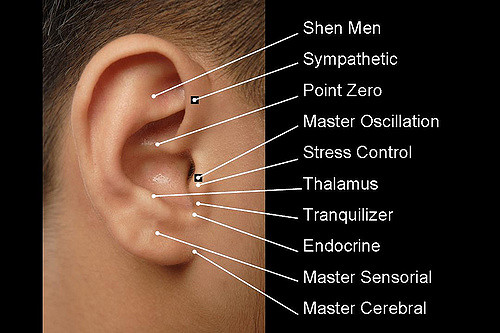As a Millennial, it’s easy to become an addict.
I know, because I think my old boyfriend was one.
It wasn’t obvious at first. I just noticed he drank more than I did. That he drank when he was anxious or upset. That he drank to process emotions (or rather, to numb the intensity of them). That he drank, it seemed, more out of necessity than for enjoyment.
And that, yes, it made me uncomfortable.
I never brought it up while we were together. I didn’t know how, and I wasn’t “sure.” I was pretty sure he’d get defensive, or it wouldn’t go well, or he’d somehow turn it back on me, or he’d turn away from me completely.
But if I could have told him something—if I would have had the faith that he would have listened. I would have told him this:
I’m worried about you.
I think you’re addicted to alcohol.
And I want you to know from my background in therapy that this is something you can address. And it’s something I hope you address with more than just drugs. There are a lot of options that could do wonders for you.
Drugs, alcohol, gambling, and sex are all more accessible than ever before in history. Besides behavioral addictions (like eating disorders or video game addiction), it’s not hard to get your hands on drugs like bars (Xanax), Oxy (Oxycontin), purple drank (codeine), and Percs (Percocet)—let alone alcohol and marijuana, a substance that has recently been legalized in many states.
Admitting we’re addicted to something and seeking help for it has always had a lot of stigma and shame surrounding it.
However, many Millennials have been shifting that mindset. It has become more socially acceptable to talk openly about mental and emotional health in general, including substance abuse.
This is a good thing. As a mentality, it creates a safer space for everyone—not just for those addicted, but for peers and loved ones. It also opens the way to explore alternative methods of healing addictions. Holistic approaches have been shown to be beneficial in many ways—so the more people who learn about them, use them, and spread the word, the better.
Here are three exciting, up-and-coming methods for those looking to free themselves of addiction in order to live lives of dignity and grace:
1. Neurofeedback
Neurofeedback works by scanning your brain waves (via sensors attached to the brain) and mapping them on a computer screen based on frequency levels. Neurofeedback can actually rewire the brain disorder of addiction by retraining the brain to be more focused, calm, and relaxed.
Essentially, it helps a person think more clearly and rationally, rather than impulsively. This, in turn, allows clients to make the conscious choice to not abuse a substance.
In 2005, Bill Scott, one of the leading researchers on the efficacy of neurofeedback, conducted a study on people addicted to more than one substance. He found that 77% of participants who got neurofeedback remained abstinent 12 months after treatment, whereas only 44% of the control group did.
Based on these findings, he created the neurofeedback software program BrainPaint, which is currently available at a number of treatment centers. (This is a good thing to ask about if you’re looking at a certain facility.)
Typical addiction programs last for 30 days, which helps with short-term results but not longevity. Neurofeedback helps in several concrete ways. First, treatment specialist Matt Morgan points out, “It can help keep addicts from leaving treatment early.” An addict who doesn’t complete treatment is far more likely to fail in their attempt to stop their addictive patterning.
Second, many addicts say neurofeedback helps lessen key triggers like anger, depression, or insomnia, which can prompt relapse. Anything that helps calm the initial triggers for addiction helps dramatically with long-term recovery.
Neurofeedback has been around as a treatment for over 40 years, and has primarily been used with clients experiencing PTSD. But over the last five years, it has gained traction as a “new” alternative method to help addiction. It is an exciting and truly cutting-edge form of treatment that can lead to real and lasting transformation.
2. Acupuncture
Acupuncture is over 2,000 years old. It is a well-established Traditional Chinese Medicine (TCM) that has many variations, but has remained fundamentally unchanged at its core.
Acupuncture focuses on detoxifying the body and helping an individual heal without the need for prescription medication. Interestingly, addiction isn’t even a known diagnosis in TCM. For example, when treating patients, Claudia Voyles, acupuncturist and clinical supervisor at AOMA Graduate School of Integrative Medicine, focuses on either withdrawal symptoms, cravings, or triggers like stress, anxiety, and depression. Her focus is not what a person is addicted to, but what is beneath the addiction.
In the 1970s, Michael Smith developed a form of treatment called the National Acupuncture Detoxification Association (NADA), which focuses on five main acupuncture points on the ear that are particularly helpful for detoxing addictions.
The five points help to detoxify, restore, and heal damage in the body that has occurred as a result of addiction. Specifically, the lung point improves lung functioning, lessening feelings of grief. The liver point removes toxins from liver and blood, subduing aggression. The kidney point repairs vital organs, reducing stress. The sympathetic point relaxes and soothes the nervous system. The last point, Shen Men, focuses on decreasing anxiety.
Research has shown that NADA is most effective in diminishing cravings and decreasing symptoms from drug, alcohol, and nicotine withdrawal, such as distress or dysphoria. NADA inhibits GABA neurons flooding the brain with dopamine, creating a more positive, calming mood and decreasing the effects of withdrawal.
Addiction specialist David Sack says, “Anecdotal evidence abounds that acupuncture can make detoxification less painful, help control cravings, and decrease anxiety, among other benefits.” Ultimately, advocates say acupuncture helps people recovering from addictions to process material so that they can find the root cause of their addiction(s).
If cost is an issue for you but you’re interested in exploring acupuncture, be aware that many cities have at least one acupuncture clinic where treatment is either offered at a low-cost or on a sliding scale from roughly $20 to $40 per session—a fraction of the cost of one-on-one treatment.
3. Horticulture therapy (gardening)
Evidence shows that gardening can have significant positive effects on individuals overcoming addiction. Gardening lowers cortisol levels, reduces aggression, improves self-esteem, decreases anxiety and depression, and improves concentration and connection.
Gardening has, in fact, been used as a therapeutic method dating back to the time of queens and kings. Palace gardens were found to help with mental illness and increase health.
Garden therapy, aka Horticulture Therapy (HT), is used in a variety of rehabilitations programs. Typically, HT is offered in a group setting with professionally-trained therapists who establish treatment goals. Patients usually plant flowers or fruit and vegetable gardens, but many gardens are specialized based on individual needs.
Tending a garden puts the patient in a care-giving role, empowering them to take responsibility of another living thing. This gives the person a sense of purpose, which combines in a healthy way with a group dynamic in HT to help with both communication skills and cooperation.
Gardening is particularly helpful for Millennials, as it allows and encourages them to fully unplug from devices and connect back to their natural roots. Uninterrupted time in nature has become more and more absent from this generation, and becoming reconnected with the earth can have a tremendously relieving effect.
If you can’t afford or find a specific HT program, you can still take advantage of garden therapy. Volunteering at a community garden is an easy and meaningful option, since it contributes to both the web of connection in that community as well as the well-being of the earth.
~
If you or someone you love needs help with addiction, please know recovery is possible, and that there are lots of resources to help you. Rehab.com is a good place to start, since it has the most comprehensive information on rehabilitation facilities in the U.S. and Canada.
Once you’re on your path, alternative methods of healing like these can help heal you or someone you love deeply in a non-invasive and often relaxing way. Though the road can be long, it does lead to joy and fulfillment in the end.
I hope everyone who needs help gets it…including my old boyfriend.
Author: Melanie Curtin
Image: Flickr/Tomás Fano, Flickr/sushiphotos
Editor: Callie Rushton












Read 0 comments and reply